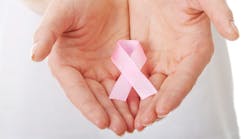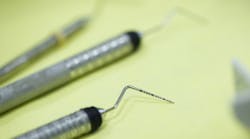Total-etch or self-etch: the debate continues
By Lee Ann Brady, DMD My partner and I had dinner together this week, and once we had handled our agenda items about the office, the conversation turned clinical. Before I knew it, we were discussing etching techniques. My experience is that this is a common conversation among dentists; we poll one another to see what everyone else is doing and what their experience is with their chosen technique.ALSO BY DR. LEE ANN BRADY |Choosing the right all-ceramic material I make my choices about dental materials and techniques based on a variety of factors that include effectiveness, longevity, efficiency, and patient satisfaction. For these exact reasons, when I am asked which I use — total-etch or self-etch — my answer is both, depending on the clinical situation.
The purpose of etching is to remove the smear layer that is present after tooth preparation. In addition it opens the dentinal tubules, demineralizing enough of the dentin to allow the formation of resin tags within the dentin structure. This process in combination with dentin adhesives result in bond strengths adequate to place and retain restorations. Both techniques accomplish these goals, and come with risks and benefits. Total etching is the classic technique of utilizing a 30% to 40% phosphoric acid gel to prepare both the enamel and the dentin for adhesive procedures. One of the greatest advantages of this technique is its ability to prepare enamel, dentin, and sclerotic dentin for bonding, resulting in high bond strengths. Additionally total-etch systems do not interfere with the polymerization of dual-cure resin products, so they can be used universally. On the other side are the risks. Utilizing a total-etch system can be technique-sensitive. First we have the challenge of adequately etching the enamel without over-etching the dentin. Enamel surfaces require 25 seconds of exposure to phosphoric acid. Dentin on the other hand should not be exposed to the gel for more than 15 seconds. Over-etching dentin results in postoperative sensitivity as well as decreases in bond strength due to the demineralization penetrating further into the tubules than the resin tags will go, and formation of a gap. To compensate for this challenge, I ring the enamel in etching gel and count off 10 seconds. Then I cover all of the dentin surfaces, wait 15 more seconds, and then rinse.
The purpose of etching is to remove the smear layer that is present after tooth preparation. In addition it opens the dentinal tubules, demineralizing enough of the dentin to allow the formation of resin tags within the dentin structure. This process in combination with dentin adhesives result in bond strengths adequate to place and retain restorations. Both techniques accomplish these goals, and come with risks and benefits. Total etching is the classic technique of utilizing a 30% to 40% phosphoric acid gel to prepare both the enamel and the dentin for adhesive procedures. One of the greatest advantages of this technique is its ability to prepare enamel, dentin, and sclerotic dentin for bonding, resulting in high bond strengths. Additionally total-etch systems do not interfere with the polymerization of dual-cure resin products, so they can be used universally. On the other side are the risks. Utilizing a total-etch system can be technique-sensitive. First we have the challenge of adequately etching the enamel without over-etching the dentin. Enamel surfaces require 25 seconds of exposure to phosphoric acid. Dentin on the other hand should not be exposed to the gel for more than 15 seconds. Over-etching dentin results in postoperative sensitivity as well as decreases in bond strength due to the demineralization penetrating further into the tubules than the resin tags will go, and formation of a gap. To compensate for this challenge, I ring the enamel in etching gel and count off 10 seconds. Then I cover all of the dentin surfaces, wait 15 more seconds, and then rinse.
Phosphoric acid gets placed on enamel only for 10 seconds.
Phosphoric acid gel fills prep to etch dentin for 15 seconds and complete enamel etching.
Tooth following etching.
Placement of dentin adhesive. Rinsing adds the next challenge as then we have to understand how moist to leave the prep before placing the dentin adhesive. The concept is to rinse the gel away and dry to remove pooling of water, yet leave water in the dentinal tubules. The water is important because when the dentin is too dry, the collagen matrix of the dentin tubules collapses and an adequate hybrid zone is not formed. This collapse prevents penetration of the resin and decreases bond strengths. Primer is hydrophilic and designed to chase water, so having moisture is inherent in a successful bond. I have been taught many ways to do this. My current favorite is to place the high volume suction over the tooth and leave it in place for 20 seconds. The other challenge of rinsing the gel comes from its acidity and ability to cause the patient to salivate during a time when isolation is critical. We use a disposable surgical suction to remove as much of the blue gel as possible prior to rinsing. Then rinse with the high volume suction directly over the tooth to minimize the amount of phosphoric acid that gets on the patient's tongue. In my total-etch technique, I utilize a rewetting/desensitizing agent after rinsing and prior to placing the primer to overcome both the risk of postop sensitivity and over-drying. Self-etching systems rely on 10% maleic acid or acidic monomers to remove the smear layer and demineralize the tooth structure. The overarching advantage of these systems is the near absence of postoperative sensitivity. Almost every dentist I talk to who uses a self-etching system reports that they struggled with postop issues when using total-etch, but that it has all but disappeared since the switch. The absence of postoperative sensitivity comes from not over-etching or over-drying the dentin as part of the protocol. Not having to manage the timing of the material against enamel vs. dentin, or worry about rinsing and drying are advantages all to themselves. This upside does, however, come with some risks. Self-etching systems are less effective at preparing enamel surfaces and sclerotic dentin. The result can be lower bond strengths and the concern about adhesive failures. Many of the clinicians I speak to are utilizing a hybrid technique to overcome this challenge. They place phosphoric acid gel on only the enamel margins for 25 seconds. They rinse, thoroughly dry, and then use a self-etching dentin adhesive. The etching component in the dentin adhesive results in the product having an acidic pH. This acidity can interfere with the chemistry of some dual-cure resin products. If you are using a self-etching system, I strongly recommend that you verify the compatibility between your dentin adhesive and the resin systems you use routinely. So let the debate continue for everyone else while I keep both systems close at hand. Whether I self-etch, total-etch, or use the new hybrid technique depends on my assessment of the clinical factors present, and which technique I believe will be most efficient and effective, resulting in the highest patient satisfaction and clinical longevity.
Dr. Lee Ann Brady earned her DMD degree from the University of Florida College of Dentistry. Her practice experience has been rich and varied. For 17 years she worked in a variety of practice models from small, fee-for-service offices to large, insurance-dependent practices as an associate and a practice owner. She was invited to join The Pankey Institute in January 2005 as its first female resident faculty member and was promoted to clinical director within a year. She was asked by Dr. Frank Spear to join him in the formation of Spear Education and the expansion of his curriculum in September 2008 as executive vice president of clinical education. This year, Dr. Brady launched her website, www.leeannbrady.com, to offer clinical and practice content daily. In addition to being a dedicated educator, she maintains a private practice in Glendale, Ariz.




